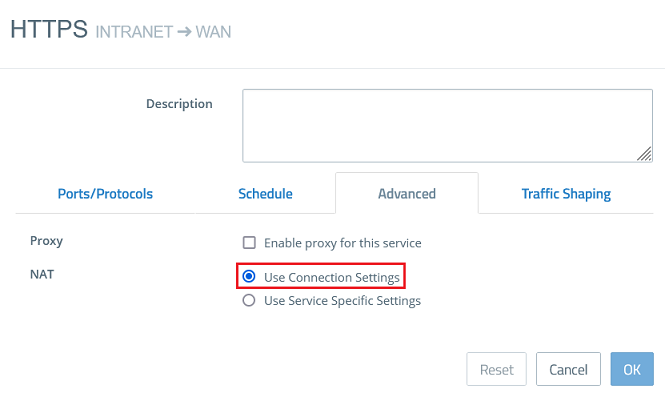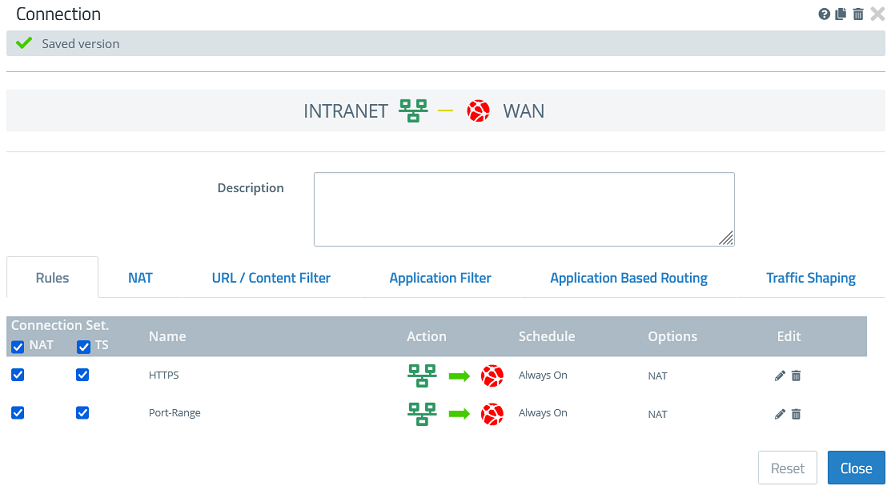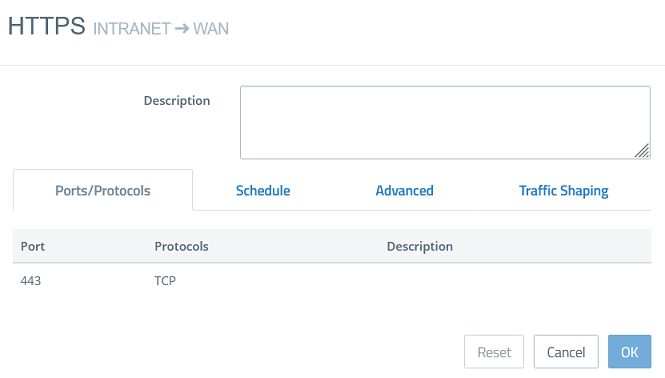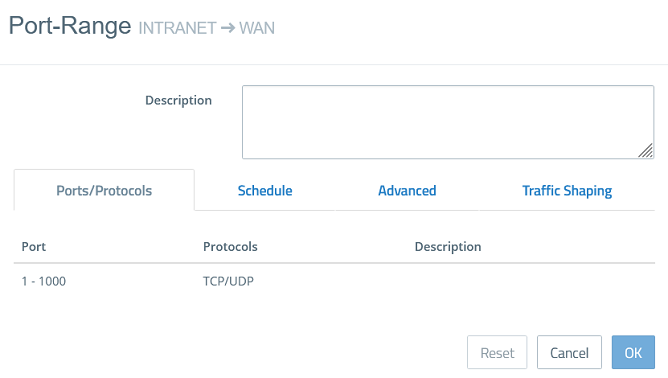...
1) Note the direction of the arrow when configuring NAT (only when the "Service Specific Settings" are used):
In the default configuration the option Use Connection Settings is selected. With this option NAT is used for a connection between a local network an an Internet site. Therefore no additional settings are necessary in most cases.
When using the option Use Service Specific Settings a A Unified Firewall offers numerous options for NAT configuration. Most commonly, only data traffic in the direction of the Internet is masked.
...
| Info |
|---|
Using the option bidirectional also produces to provides a functional Internet connection. However, if you operate port forwarding, the sender address displayed is that of the Unified Firewall and not that of the original sender. The option right-to-left prevents any Internet communication, since communication from the local network to the Internet is unmasked. Only incoming communication is masked. |
2) Use the “Network” object instead of the “IP range” object for the entire network:
Using an IP range means that, in the background, a specific rule is created for each IP address. This should therefore only be used for contiguous IP addresses and not for large address ranges or even an entire network.
Bei Verwendung eines Netzwerks wird lediglich eine einzelne Regel erstellt
Using a network creates a single rule only.
3) Avoid using the same protocols when cascading:
...
The custom service Port_Range contains the TCP and UDP ports 1–1000. The protocol HTTPS (TCP port 443) is added, even though this is already included in the service Port_Range. This leads to a twofold generation of rules.






